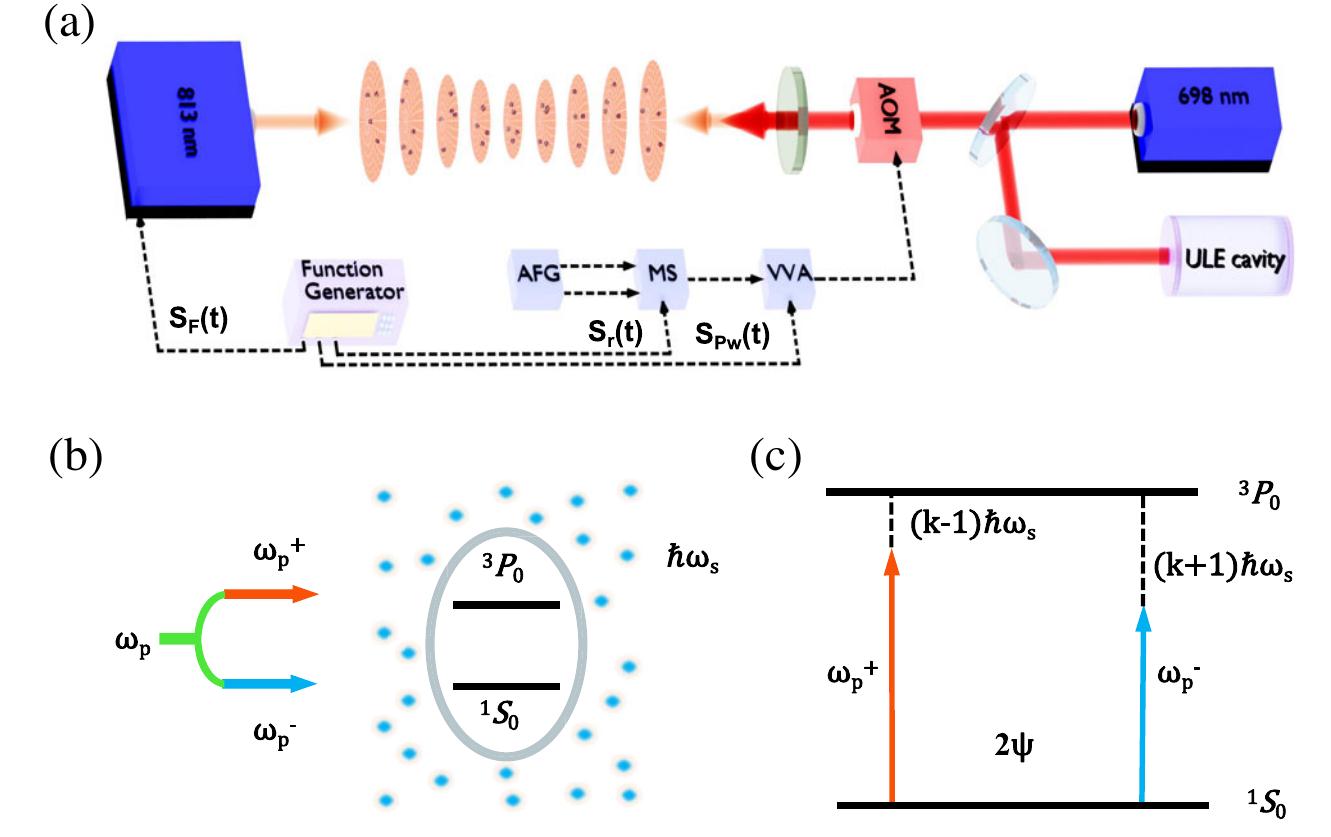Based on the strontium optical lattice clock platform, the research team led by Prof. CHANG Hong from the National Time Service Center, the Chinese Academy of Sciences and ZHANG Xuefeng from the School of Physics of Chongqing University observes the interference effect between Floquet quasi-particles.
This work was published in physical Review Letters. The link to the paper is: Doubly Modulated Optical Lattice Clock: Interference and Topology , Phys. Rev. Lett. 127, 033601 (2021).
According to Floquet theory, when a quantum system is driven periodically, Floquet quasiparticle excitations occur. When two modes are driven simultaneously, the relative phase may lead to the interference effect between Floquet quasi-particles, and the application of the interference effect will be of great value for quantum precision measurement.
Benefiting from ultra-high frequency measurement precision, the strontium optical lattice clock developed by the National Time Service Center has the experimental conditions to observe the interference effect of Fouquet quasi particles, said Prof. CHANG Hong.
Researchers trap strontium atoms in a lattice. The two-level atom is surrounded by Floquet quasiparticles by modulating the lattice light frequency, which can assist the transition shown in Fig. 1(b). When the coupling strength of the clock laser to the atoms is modulated, different number of Floquet particles can be selected to assist the transition shown in Fig. 1(c). There is a certain phase difference between the two transition processes, resulting in interference effect. The interference effect was observed by precise measurement of the clock transition spectrum of the Strontium atoms. In this experiment, the Hamiltonian described the system corresponds to the SSH model of long-range interaction, so that the one-dimensional topological insulator with high topological number can be well simulated.
Based on optical lattice clock, time and frequency measurement become the most accurate basic physical quantity at present. The research of strontium optical lattice clock in China has always been in the status of "keeping pace" for a long time, which lags far behind the technicalities led by the National Institute of Standards and Technology in the United States and the University of Tokyo in Japan.
The optical lattice clock research team of the National Time Service Center realized the closed-loop of strontium optical lattice clock in 2017, and achieved the breakthrough of E-18 level of frequency stability in 2019. Recently, a series of original achievements have been made in the research of strontium optical lattice clocks, including: the proposal and implementation of the dual excitation spectrum strontium optical lattice clock (Appl. Phys. Lett. 117, 231101 (2020)), the realization of the narrow-linewidth Floquet Rabi spectrum (Chin. Phys. Lett. (Express Letter). 38, 073201 (2021)) and the observation of interference effect between Floquet quasi-particles (Phys. Rev. Lett. 127, 033601 (2021)).

Figure 1. Schematic picture of experiment setup and interference.(Image by NTSC)
(a) Schematic diagram of the experimental setup (b) Floquet quasi-particles can be generated around the atom by periodically driving the lattice laser frequency. (c) The modulation of the clock laser results in the creation of two channels through which the atom can transition from the ground state (1S0) to the excited state (3P0) with the help of the Floquet quasi-particle by different processes. As the initial relative phase between the two modulation is different, the interference between different Floquet particles is formed.


